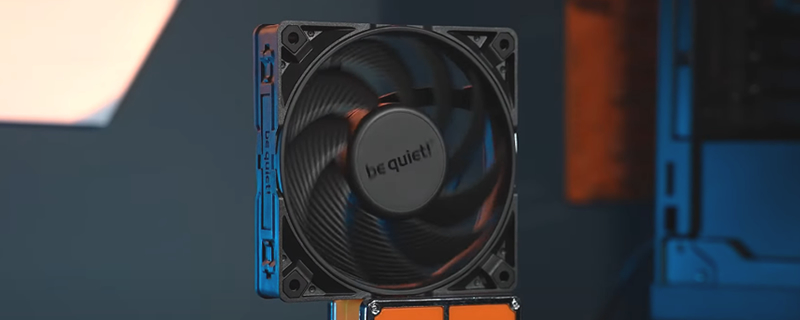How be quiet! be quiet – A glimpse at high-end fan production
be quiet! gives us a look at the tech behind their latest fans
be quiet! is one of the PC industry’s premiere fan manufacturers, and today they have given their fans a look behind the curtain at some of the technologies behind their latest Silent Wings 4 fans, specifically their fan balancing techniques.Â
Several factors can contribute to fain noise, with two of the major factors being bearing noise and fan balance, the latter of which is challenging to optimise. A well designed bearing can be used on all fans to minimise noise, but creating fully balanced fans is not so simple. Each fan is slightly different, with plastics being non-uniform in density and manufacturing precision has its limits, so be quiet needs to be clever if they want to create balanced fans, and that means that each set of fan blades needs to be tested individually.Â
Be Quiet balances their fans using a process called “Automatic Additive Balancing”, using specialised machines to move the centre of mass of their fans as close to the centre of their fans as possible.Â
Ideally, you want the centre of a fan’s mass to be at the centre of its motor hub, limiting how much a fan can vibrate. The forces centrifugal force that an unbalanced fan can be defined by the following equation. Note that the equation below is slightly different than the equation used in be quiet’s video.
Force (F) = Mass (m) x Angular Velocity2Â (v2) x distance from the centre (r)
So how does be quiet’s “Automatic Additive Balancing” balance the company’s fans? First the company tests their fans and then their “Automatic Additive Balancing” machine adds a liquid balancing component to their fans at specific locations to move the centre of their fan’s mass towards the centre of fan (lowering the value of r in the equation above). This balancing component is then baked to become a solid.Â
After this process, the centre of mass of be quiet’s Silent Wings 4 fans are optimised, lowering the unbalanced centrifugal forces that their fans experience to lower fan vibrations and fan noise. This lowers fan noise levels without needing to lower fan speeds (angular velocity), or notably increase the mass of their fans. The video below showcases this process in action.
  The noise level and performance of a fan depend not only on its bearings, but also on the weight distribution. That’s why our Silent Wings 4 undergo a balancing process using automatic additive balancing.
If you have ever wondered why premium fans are so expensive, the simple reason is that designing, manufacturing, optimising, and testing these products is not a cheap process. More effort goes into creating these fans than you would expect, and techniques like what be quiet shows above is just one part of the process. Add on complex electronics for RGB support and other add-ons, and it is easy to see why some fans cost as much as they do.Â
You can join the discussion on be quiet’s fan production methods on the OC3D Forums.



